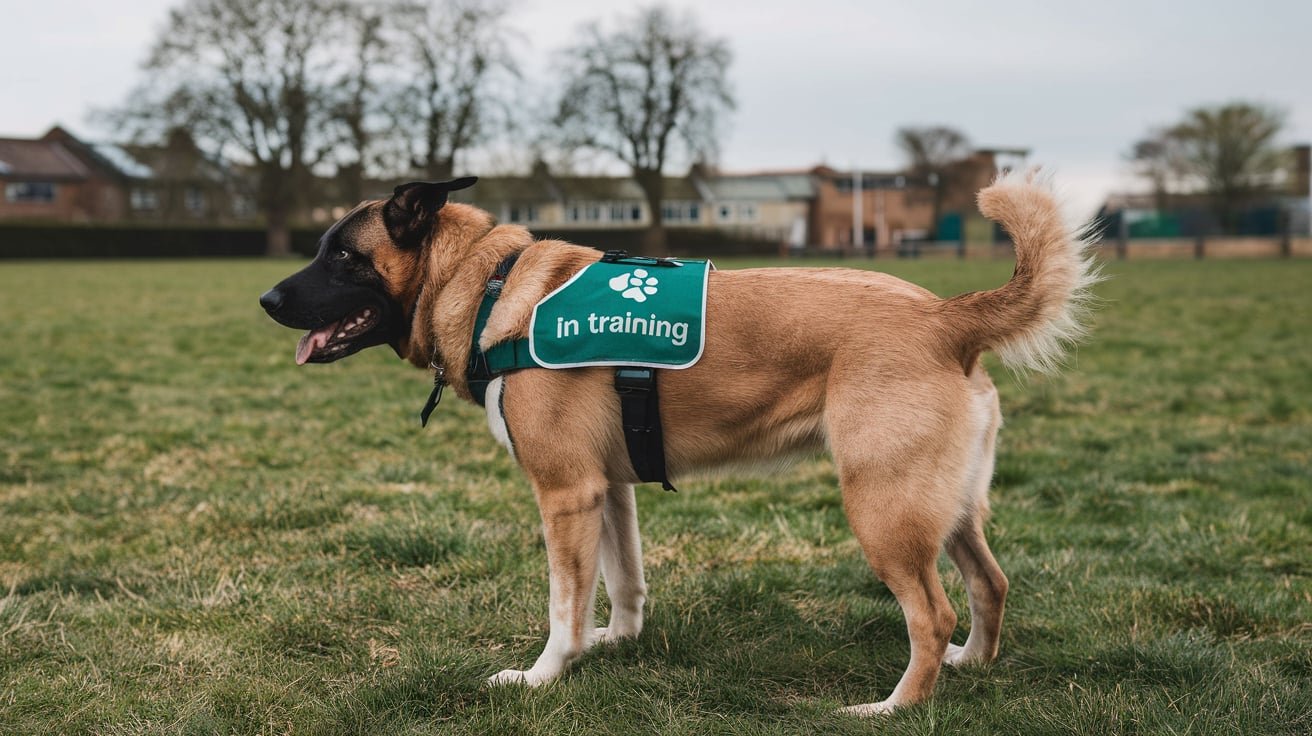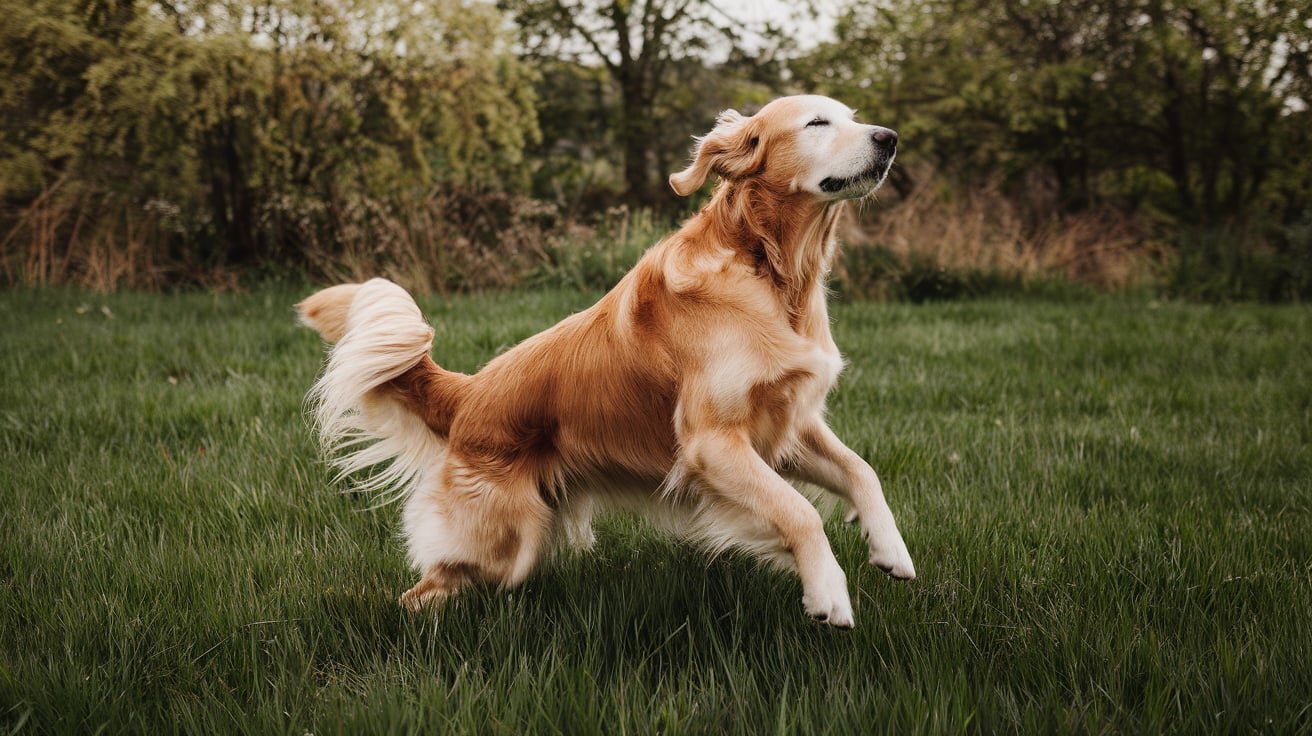Service dogs provide an invaluable service to people with disabilities, making their daily lives much easier. Training a service dog in the UK is an in-depth process that requires dedication, patience, and a deep understanding of your dog’s temperament and capabilities. In this guide, we’ll walk you through everything you need to know about training a service dog in the UK.
What is a Service Dog?
A service dog is trained to perform specific tasks for individuals with disabilities, such as guiding the blind, alerting people with hearing impairments, or assisting those with mobility issues. These dogs undergo specialized training to ensure they can handle the tasks required of them and behave appropriately in public spaces.
Imagine a day when you struggle to pick up something you’ve dropped due to mobility limitations, and your trusty companion fetches it for you without hesitation. This is the essence of what service dogs can offer.
Is Your Dog Suitable for Service Dog Training?
Not every dog is cut out for the role of a service dog. Service dog training requires a dog to have specific traits like calmness, intelligence, and obedience. It’s important to assess your dog’s temperament before you begin training.
How to Identify the Right Breed for Service Work
While most dogs can be trained to perform various tasks, some breeds are naturally inclined to succeed as service dogs. Popular breeds in the UK include Labradors, Golden Retrievers, and German Shepherds. These dogs are known for their friendly dispositions and intelligence, making them ideal for service work.
How to Get Started With Service Dog Training
1. Basic Obedience Training
The foundation of any service dog’s training starts with basic obedience. This includes teaching your dog essential commands such as sit, stay, come, and heel. Mastering these basic commands ensures your dog will follow your instructions without hesitation in any situation.
A friend of mine who uses a wheelchair shared her story of her Labrador, Charlie, who took a bit longer than expected to master “heel” due to his playful nature. After weeks of consistent practice and positive reinforcement, Charlie now walks beside her chair without pulling.
2. Advanced Obedience
Once your dog has mastered the basics, it’s time to move on to advanced obedience training. This step involves practicing the commands in different environments and gradually increasing the difficulty level. A service dog should be able to obey commands in busy public spaces with lots of distractions.
Task-Specific Training
Now comes the heart of service dog training: task-specific training. This involves teaching your dog to perform the exact tasks they will need to assist you or someone with a disability.
3. Task-Based Training Examples:
- Mobility Assistance Dogs: These dogs can be trained to retrieve objects, open doors, and provide balance support.
- Guide Dogs: They help individuals with visual impairments by navigating around obstacles and ensuring the safety of their handler.
- Medical Alert Dogs: These dogs are trained to detect changes in their handler’s condition, such as a diabetic alert dog recognizing low blood sugar levels.
It’s important to identify what tasks your dog needs to perform and focus on those during training.
Public Access Training
One of the key components of service dog training is public access training. Your dog must behave calmly and obediently in public settings, such as restaurants, shopping centers, or public transport. Public access training includes:
- Socializing with other dogs and people: A service dog must remain focused on their handler even in the presence of distractions.
- Remaining calm under stress: Your dog will encounter various situations in public, from loud noises to busy crowds. They must remain composed at all times.
The Role of Positive Reinforcement in Service Dog Training
Positive reinforcement is the key to successful service dog training. Rewarding your dog for performing tasks correctly or responding to commands will make the training process smoother and more enjoyable for both of you.
The Importance of Consistency
A service dog needs consistency. Daily training sessions, patience, and regular reinforcement of tasks are crucial to your dog’s success.
A friend’s service dog, Rosie, was slow to catch on to her task of opening doors. However, after months of patient and consistent training, Rosie now opens every door in the house on command.
Professional Help: Should You Hire a Service Dog Trainer?
If you’re finding it difficult to train your service dog yourself, hiring a professional service dog trainer in the UK could be a smart investment. These trainers are skilled at teaching dogs complex tasks and can help ensure your dog is fully capable of providing the assistance you need.
You can find reputable trainers through organizations such as Dogs for Good or Guide Dogs UK.
Certification and Legal Considerations in the UK
In the UK, service dogs do not need to be registered or certified by law, but they must meet specific training standards. Many organizations offer certification programs, but these are voluntary. If you properly train your dog, you can legally take them into public places where pets are generally not allowed.
I remember a story from Sarah, a woman who struggled with anxiety and found peace in knowing that her service dog, Molly, was always by her side—even in places where pets were usually prohibited. Molly’s calm presence helped her navigate crowded spaces, ensuring she could live her life fully.
Frequently Asked Questions
1. Can I train my own service dog in the UK?
Yes, it is entirely possible to train your own service dog in the UK. However, it requires a lot of time, patience, and dedication. Working with a professional service dog trainer can make the process easier.
2. How long does it take to train a service dog?
On average, service dog training can take 1-2 years, depending on the complexity of the tasks your dog needs to perform.
3. Do service dogs need to wear a vest?
The law does not require service dogs in the UK to wear a vest, but experts often recommend it. A vest clearly identifies your dog as a working animal and can help avoid misunderstandings in public spaces.
4. What happens if my service dog misbehaves in public?
If your dog misbehaves in public, authorities may ask you to leave. This is why public access training is such an important part of the training process.
Final Thoughts: Is Training a Service Dog Worth It?
Training a service dog can be a long, challenging journey, but the rewards are immense. A well-trained service dog can transform a person’s life, providing independence, support, and companionship. Whether you choose to train your dog yourself or hire a professional, the key is patience, persistence, and love.
If you’re considering starting the service dog training process, then now is the time to take the first step. With dedication and patience, you and your dog can ultimately make an incredible team.



